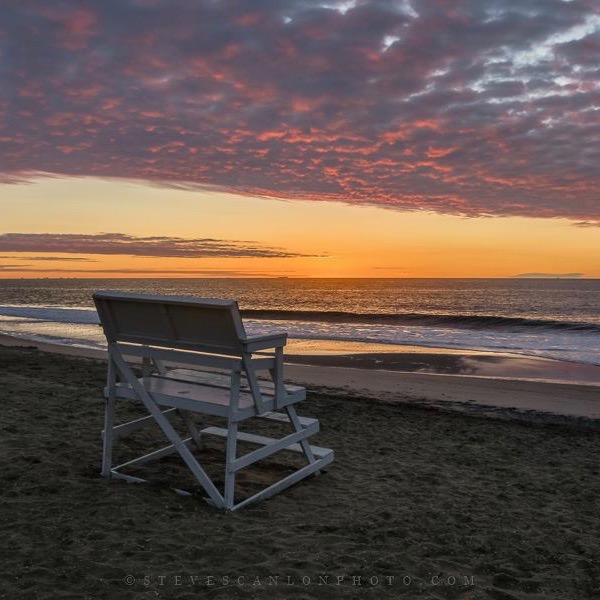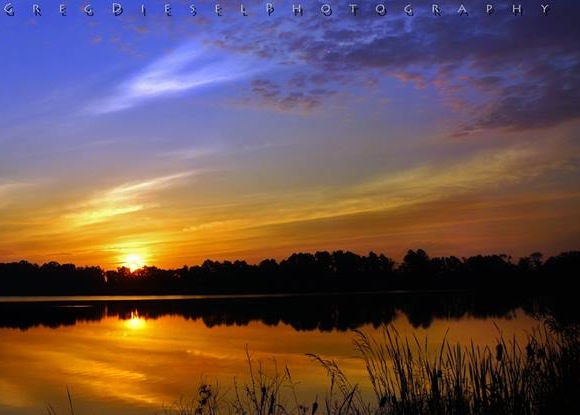
The June solstice brings the longest day for the Northern Hemisphere. But the earliest sunrises come before it.
When to look: The exact dates of the earliest sunrises vary with latitude. For example, for the Northern Hemisphere, the earliest sunrises can come as early as late May. For much of the United States, the earliest sunrises happen in the week or so before the summer solstice. Southern Hemisphere? Your earliest sunsets happen a week or so before the June solstice.
When is June solstice? The June solstice – summer solstice for the Northern Hemisphere, winter solstice for the Southern Hemisphere – will fall at 9:14 UTC (4:14 a.m. CDT) on Tuesday, June 21, 2022. Read: All you need to know about the June solstice.
For the Northern Hemisphere: Have you noticed how early your sunrises are? Plus, the dawn light is beautiful.
For the Southern Hemisphere: If you relish the daylight, as many do, you’ll be glad to know your sunsets will soon be shifting later! The earliest sunsets of the year take place around now for those at mid-latitudes in the Southern Hemisphere. And, that’s even though your winter solstice – and shortest day – aren’t for another week.

Earliest sunrises vary with latitude
The exact date of earliest sunrise (and earliest sunset) varies with latitude. At 40 degrees north latitude – the latitude of, say, Philadelphia in Pennsylvania, the Mediterranean Sea and northern Japan – the earliest sunrise of the year happens on or near June 14. Likewise, for that same latitude, the latest sunset of the year falls on or near June 27. Meanwhile, the longest day of the year – the day containing the greatest amount of daylight, overall – comes on the solstice on June 21.
So it is for other Northern Hemisphere latitudes, also. The dates of earliest sunrise and latest sunset don’t coincide exactly with the solstice. In fact, appreciably south of Philadelphia’s latitude, the earliest sunrise has already come and gone (in late May or early June) and the latest sunset occurs at a later date (sometimes as late as July). In Hawaii, for instance, the earliest sunrise precedes the June solstice by about two weeks, and the latest sunset comes about two weeks after. On the other hand, farther north, the earliest sunrise and latest sunset happen closer to the June solstice. Check it out at your latitude, using links on our almanac page.
Enjoying EarthSky so far? Sign up for our free daily newsletter today!

Why aren’t the earliest sunrises on the solstice?
The earliest sunrises come before the summer solstice because the day is more than 24 hours long at this time of the year. Likewise, in the Southern Hemisphere, the earliest sunsets of the year come before the winter solstice for the same reason.
Also, in June, the day (as measured by successive returns of the midday sun) is nearly 1/4 minute longer than 24 hours. Hence, the midday sun (solar noon) comes later by the clock on the June solstice than it does one week before. Therefore, the sunrise and sunset times also come later by the clock, as the tables below help to explain.
For Philadelphia (40 degrees north latitude)
| Date | Sunrise | Midday (Solar Noon) | Sunset | Daylight Hours |
| June 14 | 5:31 a.m. | 1:00 p.m. | 8:30 p.m. | 14h 59m 16s |
| June 21 | 5:32 a.m. | 1:02 p.m. | 8:32 p.m. | 15h 00m 36s |
For Valdivia, Chile (40 degrees south latitude)
| Date | Sunrise | Midday (Solar Noon) | Sunset | Daylight Hours |
| June 14 | 8:12 a.m. | 12:53 p.m. | 5:34 p.m. | 9h 21m 54s |
| June 21 | 8:14 a.m. | 12:54 p.m. | 5:35 p.m. | 9h 20m 37s |
Source: timeanddate.com.
Why before the summer solstice, not after?
The primary reason for the earliest sunrise preceding the summer solstice (and the earliest sunset preceding the winter solstice) is the inclination of the Earth’s rotational axis. For example, the earliest sunrise or sunset would take place before the solstice even if the Earth went around the sun in a circular orbit.
However, the Earth’s elliptical orbit does affect the severity of the phenomenon. At the June solstice, Earth in its orbit is rather close to aphelion – its farthest point from the sun – which lessens the effect. On the other hand, at the December solstice, Earth is rather close to perihelion – its closest point to the sun – which accentuates it.
At middle latitudes, however, the earliest sunrise/sunset comes about one week before the June summer/winter solstice, and the latest sunset/sunrise about one week after the June solstice.
Yet, at the other end of the year, at middle latitudes, the earliest sunset/sunrise comes about two weeks before the December winter/summer solstice, and the latest sunrise/sunset about two weeks after the December solstice.

Bottom line: Are you an early riser? If so – if you live in the Northern Hemisphere – you might know your earliest sunrises of the year are happening now. Southern Hemisphere? Your earliest sunsets are around now.
EarthSky astronomy kits are perfect for beginners. Order today from the EarthSky store
Donate: Your support means the world to us
The post Earliest sunrises (or sunsets) come before June solstice first appeared on EarthSky.
0 Commentaires